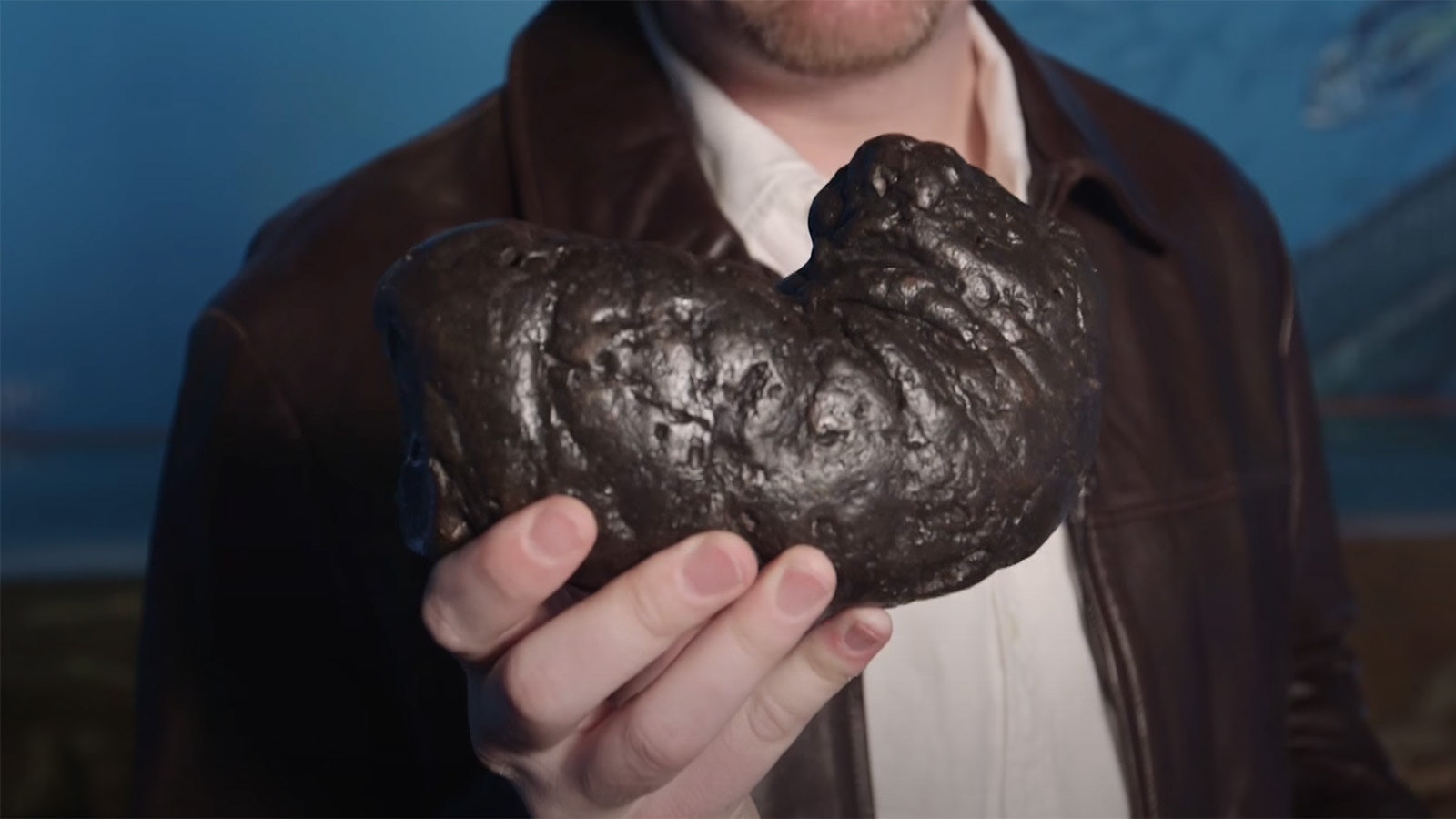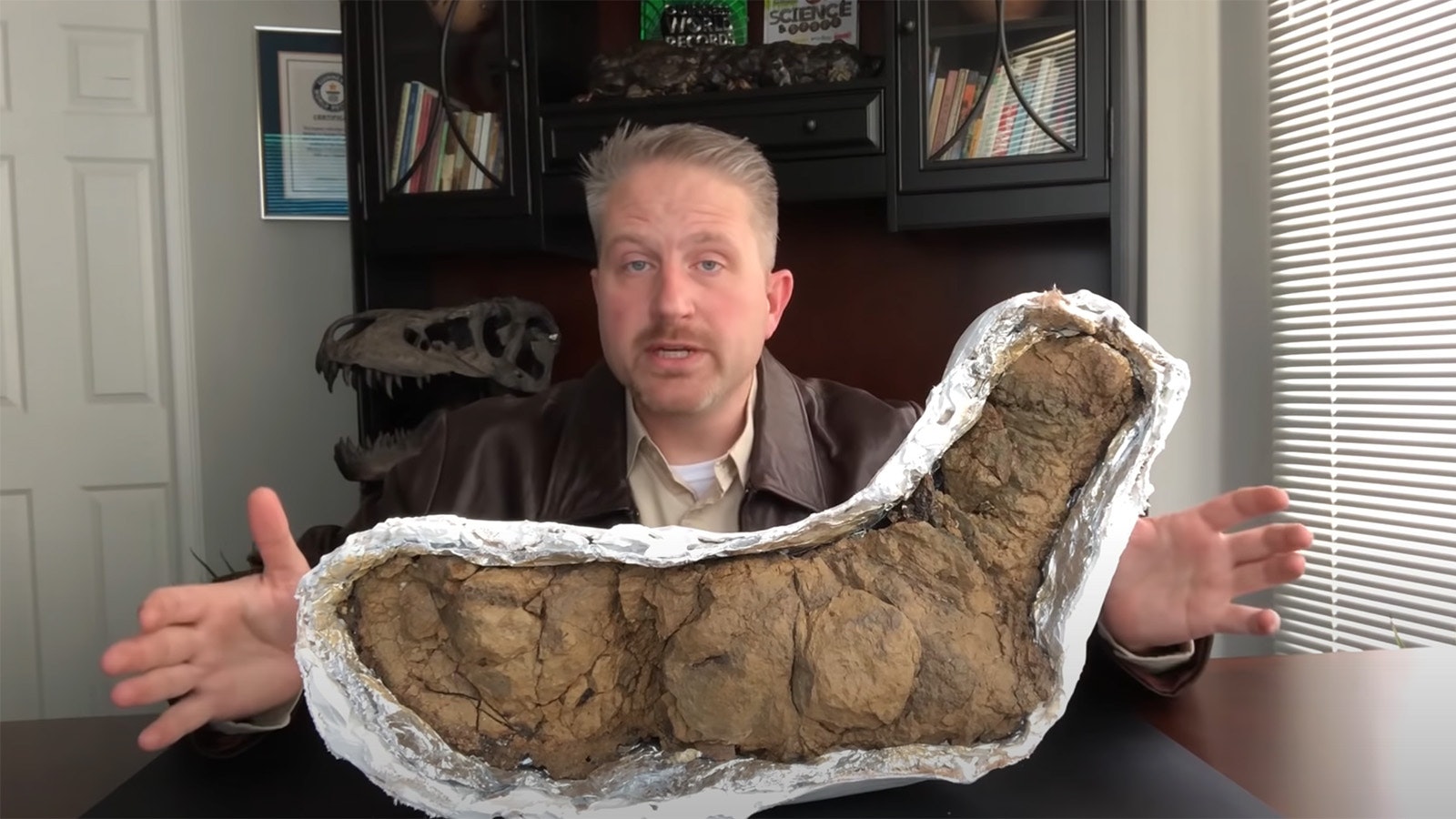One of the most famous — and expensive — examples of human poop in the world came from an unknown Viking who lived in England during the ninth century. While Wyoming has a reputation for prodigiously producing dinosaur fossils, archaeologists here wish they could make more human finds like the early medieval Viking.
The Lloyds Bank Coprolite (the scientific term for petrified and fossilized poop) was found during an archeological excavation in York in 1972. At 8 inches long and 2 inches wide, it may be the largest intact piece of human poop in the archeological record and is worth an estimated $39,000.
Andrew Jones, a York Archaeological Trust employee and “palaeoscatologist,” told the Wall Street Journal in 1991 that the Lloyds Bank Coprolite is “the most exciting piece of excrement” ever found and is “as irreplaceable as the Crown Jewels.”
The poop has a place of honor at the Jorvik Viking Centre in York, where it’s the No. 2 attraction at the unique museum showcasing the history of Vikings in the British city.
The Poop Scoop
Wyoming State Archaeologist Spencer Pelton has never found a coprolite on one of his Wyoming digs, but he hopes he will.
“Coprolites are one of the best windows we have in past diets and health,” he told Cowboy State Daily. “It humanizes the record in a much more direct way than the byproducts of food consumption that we typically rely on.”
The easiest way to determine the diets of ancient humans is by finding scraps of bone or cooking utensils at an archaeological site. However, even these pieces of evidence are circumstantial and tell a limited story of diets and health.
Analysis of the Lloyds Bank Coprolite revealed the Viking’s diet was mainly composed of meat and bread. There were also hundreds of parasitic eggs in the poop, which means this Viking was constantly ravaged by intestinal worms.
Coprolites also can contain hair, bones, pollen grains and DNA that can be analyzed in a variety of ways.

Poop Preservation
Plenty of examples of dinosaur coprolite have been found in Wyoming, and Pelton said archaeologists can and have found human coprolites as well, but they aren’t common. Finding a big human poop would be a big deal.
One of the most common places to find coprolites is ancient latrines in rock shelters. Pelton has excavated several rock shelters, but no coprolites have been found in those excavations.
“I don’t know why we don’t find more of them. It might be a case of cultural practices, where in other regions, people used rock shelters as latrines rather than living spaces,” he said. “We certainly have rock shelters with preservation characteristics to preserve them, but we haven’t had an opportunity to study that window in the past.”
Pelton thinks one of the most valuable pieces of information to get from Wyoming coprolites would be what plants ancient people here were eating.
“We can’t see that well in the archaeological record,” he said. “That’s simply because they don’t preserve. We know what animals people ate because their bones are preserved. But tubers, seeds and these other plant resources, we know people ate, but we don’t have much evidence for it.”
Wyoming coprolites could also shed light on what parasites and diseases affected ancient people and how those conditions changed over time with diet, cultural practices and population size.
“There’s a lot we could learn and a lot of insights we’ve been wanting to know for a long time. We just haven’t had the archaeological clarity to see,” he said.
Poop Potential
Pelton believes that there’s a potential goldmine of crappy information from one of Wyoming’s most famous archaeological sites: Mummy Cave in Park County.
Found in 1957 in Shoshone National Forest, excavations at Mummy Cave in the 1960s revealed several artifacts from over 9,000 years of human habitation in northwest Wyoming. The most famous discovery was the buried and mummified body of one of those inhabitants, nicknamed “Mummy Joe.”
“There have been several (coprolites) found in Mummy Cave out of layers that were 1,500 to 2,000 years old,” Pelton said. “They’re still in curation at the Buffalo Bill (Center of the West), and I don’t think they’ve ever been intensively analyzed. They’re sitting there, available to research if anybody wants to dive into those turds.”
Adding more coprolites to Wyoming’s archaeological record would be a big deal, in Pelton’s view. They might not be as large or as famous as the 8-inch-long Lloyds Bank Coprolite, but the knowledge they’d share would be immensely valuable.

Andrew Rossi can be reached at arossi@cowboystatedaily.com.





